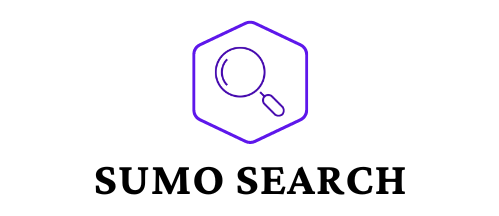Proximity search is a powerful feature in databases and search engines that allows users to find results based on how close two terms are to each other. When coupled with the use of wildcards, it becomes an even more dynamic tool for retrieving information. In this article, we’ll explore how the NextPoint wildcard within proximity search works, how it can be applied, and practical tips for leveraging it in various applications. Whether you’re working with legal documents, large data sets, or content retrieval systems, this feature can dramatically enhance your search efficiency.
What Is a Proximity Search?
Definition of Proximity Search
A proximity search allows users to locate two or more keywords within a certain distance of each other in a document or database. Unlike traditional search queries, which return results based on the presence of keywords anywhere in the text, proximity searches give more control over where the terms appear in relation to one another. For example, if you’re searching for “NextPoint wildcard” and “proximity search,” you can specify that the words should appear within five words of each other, ensuring more relevant results.
Proximity Search in Action
Consider a legal database where you’re looking for instances where a company is mentioned in the same sentence as a liability term. By specifying a proximity search, you can find documents where these terms appear closely together, eliminating irrelevant results where they might be far apart in unrelated contexts.
Understanding Wildcards in Search
What Are Wildcards?
Wildcards are special characters used in search queries to represent one or more unknown characters. They are particularly useful when you’re unsure of the exact term you’re looking for or when you want to include variations of a word in your search. The two most common wildcards are:
- The asterisk (
*), which represents zero or more characters. For example, “comp*” would match “company,” “computer,” “compensation,” etc. - The question mark (
?), which represents a single unknown character. For example, “c?t” would match “cat,” “cut,” and “cot.”
Combining Wildcards with Proximity Search
When wildcards are used in conjunction with proximity search, they become a powerful tool for retrieving highly relevant results. The NextPoint wildcard within proximity search allows you to search for terms that are not only close to each other but also include variations of those terms, broadening the scope of your query while maintaining precision.
How the NextPoint Wildcard Within Proximity Search Works
Syntax of Wildcard and Proximity Search
In a system like NextPoint, the syntax for combining wildcard and proximity searches usually looks something like this:
"term1* term2"~N
term1*is the first term with a wildcard, allowing for multiple variations.term2is the second term.~Nspecifies the maximum number of words that can appear betweenterm1andterm2.
For example, a search query like "liabilit* contract"~5 would return results where words starting with “liabilit” (such as “liability,” “liable,” etc.) appear within five words of “contract.”
Use Case Scenarios
- Legal Document Search: In legal research, proximity searches can be used to find terms like “liability” and “contract” that occur close together, even if the form of the words differs slightly. Using wildcards ensures that variations such as “liabilities” and “contractual” are included in the results.
- Data Mining: When working with large datasets, such as customer feedback or survey responses, you might want to search for sentiments or key themes. For example,
"satisfact* service"~3would return results where terms like “satisfaction,” “satisfied,” and “services” appear close to each other. - Content Retrieval: In content management systems, wildcard proximity searches help in finding specific content variations quickly, such as finding articles or reports with similar terms appearing within a given proximity, speeding up content discovery.
Advantages of NextPoint Wildcard Within Proximity Search
Enhanced Flexibility
One of the key benefits of using wildcards in proximity search is flexibility. Instead of being constrained to exact word matches, users can cast a broader net by including different word forms, ensuring that no relevant result is overlooked. This is especially useful in legal and academic research, where terminology can vary slightly across documents.
Precision in Searching
While wildcards introduce flexibility, proximity search ensures precision. By specifying how close terms must be to each other, you avoid irrelevant results where the terms are mentioned in different contexts. This combination of flexibility and precision is a hallmark of NextPoint’s wildcard within proximity search, making it a valuable tool for anyone working with large amounts of textual data.
Time Efficiency
For researchers, time is often of the essence. By using proximity searches with wildcards, users can quickly narrow down large data sets to only the most relevant documents or information. This minimizes the time spent sifting through irrelevant results, allowing for a more focused and productive research process.
Best Practices for Using Wildcard and Proximity Searches
Keep the Proximity Window Small
While wildcards expand the range of terms included in your search, it’s important to keep the proximity window relatively small. A proximity window of 3 to 5 words is often ideal for ensuring that the terms you’re searching for are related to each other. Larger proximity windows may introduce irrelevant results.
Be Selective with Wildcards
Wildcards are powerful, but overuse can lead to overly broad search results. Use them strategically in places where there are likely variations in the term you’re searching for. For example, if you’re looking for all variations of the word “contract,” using “contract*” ensures that you’ll capture relevant terms like “contracts” and “contractual,” but not unrelated terms.
Combine with Other Search Filters
To further refine your results, consider combining wildcard proximity searches with other filters, such as date ranges, document types, or metadata. This layered approach to searching will help you hone in on the most relevant information quickly and efficiently.
Challenges and Limitations
Potential for Over-Inclusion
One downside of using wildcards in proximity searches is that they can sometimes return too many results, especially if the wildcard is too broad. For example, searching for “comp*” could return results for “company,” “compensation,” “complete,” etc., some of which might be irrelevant to your needs.
Syntax Complexity
For users who are not familiar with complex search queries, the combination of wildcards and proximity search may seem daunting at first. However, once mastered, the benefits far outweigh the initial learning curve.
Conclusion
The NextPoint wildcard within proximity search is a highly effective tool for refining search results, especially when working with large text datasets. By allowing for both flexibility (through wildcards) and precision (through proximity search), this feature helps users find the most relevant information quickly and efficiently. Whether you’re conducting legal research, mining data, or managing content, mastering this search technique can save you time and improve the quality of your results.





